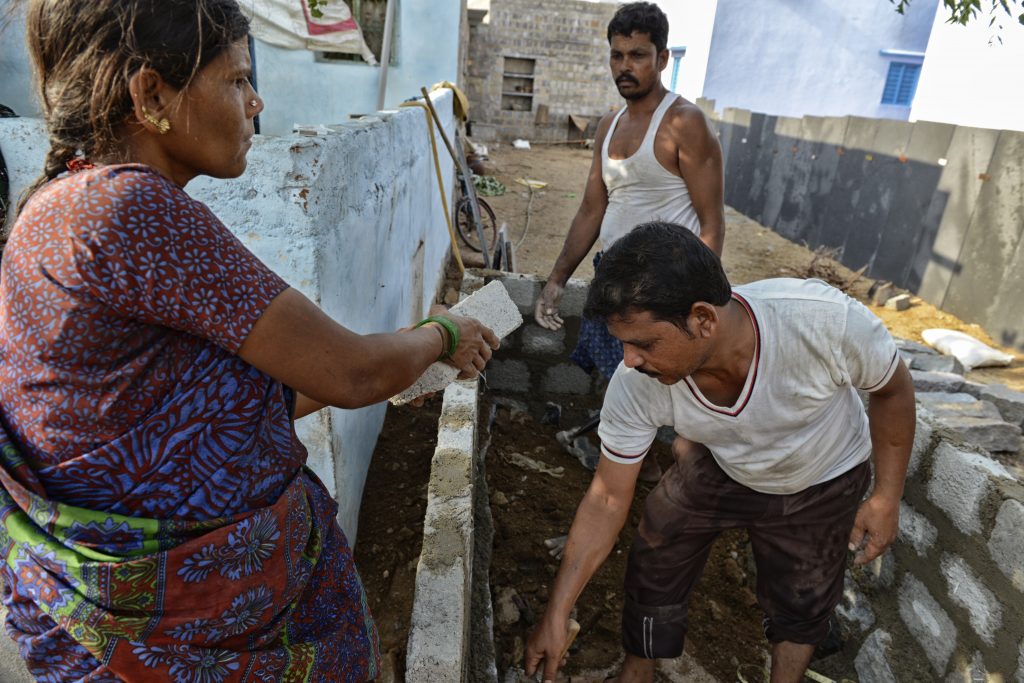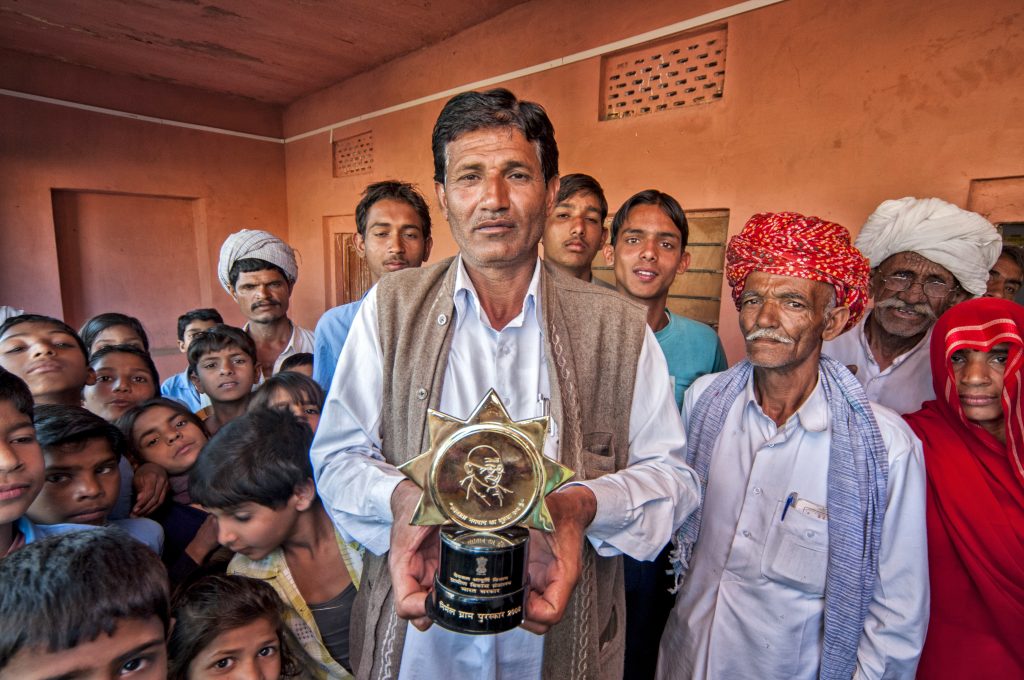
When you got to go, you got to go
Text Zigor Aldama
Prime Minister Narendra Modi is resolved to end the open defecation 590 million Indians still practise. We visit a village where soon every family will have a latrine thanks to his “Clean India” project.
Until a few weeks ago, Rangudunaik Sugali had never felt the need for a toilet. He couldn’t understand why he should spend money on such a facility if his family could meet their physiological needs out in the field for free.
And he is not the only one: Around 590 million Indians defecate in the open. That is almost half of the country’s population and also 50 percent of all people in the world without access to a latrine. It’s not only a shame for India, but also the source of disease and abuse.
And that’s why the new Indian Prime Minister, Narendra Modi, has launched the ambitious Swachh Bharat Abhiyan (Clean India Mission), which includes the construction of 110 million toilets across the country between now and 2019, at an estimated cost of about US$31 billion.

“Sanitation is more important than independence,” Mahatma Gandhi said. However, the country’s last census – conducted in 2011 – showed that only 32.7 percent of households have access to a basic latrine. That figure would be considered outrageously high in Pendlimanu, a dusty village located in the southern province of Andhra Pradesh where Sugali’s family live among other 65 households. But things are about to change, because it’s one of the first places where the project has started. Everybody has applied for the financial aid promised by the government and all hands are on deck working on it, literally, because they’re building the toilets themselves.
“A 15,000-rupee (US$230) subsidy is given for each latrine if it meets the minimum established requirements. This means that its size must be at least four by six feet and it must have two tanks,” explains Sagar Murthy, director of the Construction Department at the Rural Development Trust, the NGO entrusted by the government with the task of convincing the population of the Anantapur region to participate in the Swachh Bharat.
If they succeed, by November, Pendlimanu will eradicate open defecation, and with it, many associated problems. “Psychologically, there is the humiliation involved if one is seen doing it; then we must take into account diseases that can be transmitted this way, and the abuses that women, who often have to go at night, are exposed to,” Murthy says.
The scourge of sexual abuse knows no age, nor is it unique to rural areas. In fact, a study from 2011 found numerous cases of girls under 10 who were raped while searching for a public toilet in the slums of the capital, New Delhi, and the report transcribed interviews with some of their mothers telling of how they had to confront their attackers and be exposed to a violence that can be fatal. In addition, the stigma and lack of police and legal protection haunting the victims means that many of them don’t even report the incidents.

That’s why Balamma Banvath is now happy. Two weeks ago, they finished building the toilet that her three daughters demanded with increasing insistence. “They have toilets in the school and know the difference. So we didn’t think twice when we learned about the national programme to build them,” she recalls. “Now, we don’t have to be embarrassed during the day or expose ourselves to the snakes at night. Because a woman from the village was bitten and she almost died.”
Next door, Venkateshnaik Banavathi is not very happy. He still doesn’t believe the government will reimburse him the promised 15,000 rupees. “We have invested 18,000 because we hired a bricklayer and have chosen a better finish,” he explains, while still covering the cement with a red coating that adds a touch of colour and a silky texture.
“There is a lot of corruption and it gives me the impression that the plan is full of bureaucracy. Of course it has driven us to build the toilet, because until now, we had not done it due to economic reasons, but I’ll have to get the money to believe this is for real,” he says, still suspicious. His 17-year-old daughter, however, isn’t worried about it. “Whatever the cost, I’m grateful. I think it is a necessity in a 21st-century India.”
For more stories and photos, check out Asian Geographic Issue 114.










